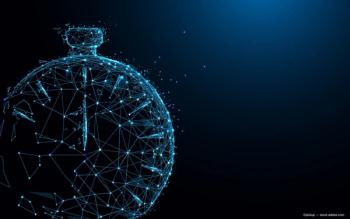
Epithelial cell removal key after accommodating IOL implantation
Results from a series of 100 eyes with an accommodating IOL (crystalens, Bausch and Lomb) implanted shows that meticulous anterior capsule lens epithelial cell removal using a combination of ultrasonic irrigation-aspiration with free-flow fluidics and capsule polishers is associated with stable anterior capsulotomy diameters, stable refraction, and excellent vision outcomes.
Key Points
Dr. Singer, a private practitioner in Randolph, VT, reported results from a series of 100 eyes with one of two models (AT50SE or AT52SE) of the lens implanted. Surgery was performed with an anterior capsulotomy measuring 6.0 x 6.5 to 7.0 mm and involved extensive anterior capsule lens epithelial cell removal accomplished using a combination of ultrasonic irrigation-aspiration (IA) with free-flow fluidics (Ocusystem Advantage, Surgical Design Corp.) and capsule polisher (Shepard polisher, Momentum Medical). IOL power calculations were performed using axial length, and keratometry values were determined with an optical biometer (IOL Master, Carl Zeiss Meditec) and the optimized Haigis formula based on Dr. Singer's own series of cases.
Complete stability of capsulorhexis size was demonstrated through comparison of slit lamp photographs taken prior to and after adhesion of the anterior and posterior capsules, at 1 to 3 weeks postoperatively and at 4 to 6 months postoperatively, respectively. MRSE measurements obtained at those follow-up visits demonstrated the stability of the refractive outcome. For the 100 eyes, the change in refraction between the two visits ranged from –0.75 to +1.0 D, but the mean change was only –0.08 ± 0.34 D (standard deviation), reported Dr. Singer.
The ultrasonic IA tip used for the anterior capsule lens epithelial cell removal has a 0.2-mm port on a 50-kHz ultrasound handpiece (Ocusystem Advantage, Surgical Design Corp.). Following aspiration of residual lens cortex, it is used at 5% to 10% ultrasound power and with free-flow fluidics (gravity only) to remove lens epithelial cells from the posterior surface of the anterior capsule for 10 clock hours. Then, the rest of the anterior capsule in the sub-incisional area is cleaned with the capsule polishers.
"The . . . system is unique because of its free-flow fluidics option. It is equipped with a special free-flow valve that is controlled by a footswitch and, when opened, allows the aspiration outflow to bypass the pump. Then, the infusion inflow and outflow are controlled using only gravity," Dr. Singer explained.
He presented an intraoperative video to demonstrate how the lens epithelial cells come readily off the capsule using the system.
"With no pump action or aspiration, the cells can be seen floating in the anterior chamber fluid until they are aspirated," he commented. The cells removed with the capsule polishers are aspirated with the viscoelastic following IOL implantation.
Newsletter
Don’t miss out—get Ophthalmology Times updates on the latest clinical advancements and expert interviews, straight to your inbox.



















































.png)


